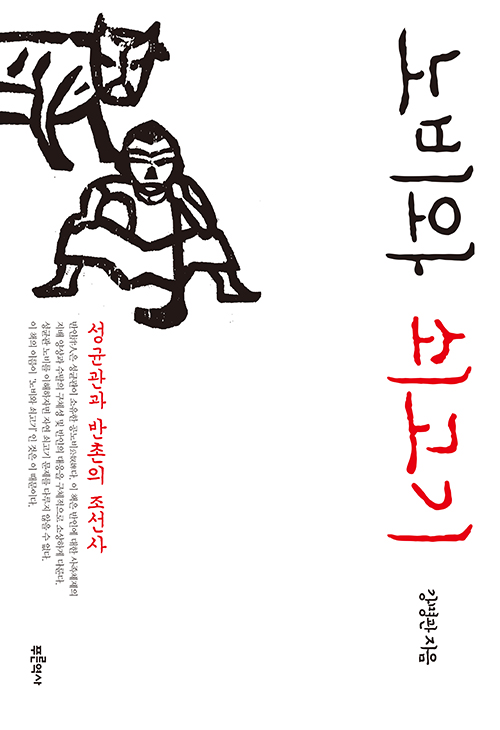Asia Book Awards
Best Asian Books of the Year

The Servants and Beef
Korea, Purunyoksa, Kang Myeong Kwan
Author
Kang Myeong Kwan
Honorary Professor of Chinese Literature at Pusan National University. He is an author known for vividly bringing Chinese literature to life through contemporary texts. Born in 1958, he graduated from the Department of Korean Language Education at Pusan National University, received a master’s degree from the Graduate School of Korean Studies at Academy of Korean Studies, and earned his doctorate from Sungkyunkwan University.
He received favorable reviews, including comments such as: “a great work that broadened the research horizons of late Choson Dynasty Chinese literature by examining the historical reality and literature of Lyeohangin (middle-class people) who were active in the urban atmosphere of Seoul during that time” (A Study of Lyeohang Literature in Late Choson Dynasty – The Munhwa Ilbo) and “It contains a vast intellectual composition that encompasses the history of customs, social history, music history, and art history. Even though there was little discussion of the literary text itself, it is fascinating how the meaning of the literary text vividly emerges along with the era during the course of the discussion.” (The Space for Creating Literary Art in the Choson Dynasty – Jeong Min, Hanyang University).”
Based on his extensive intellectual involvements, he is attempting to reinterpret the history of customs and has published various books that easily explain Chinese literature using a vast amount of data. He is also studying issues related to the nature of knowledge, including how it is produced and distributed in the Choson Dynasty, how it is internalized in the human mind to shape thoughts and actions, and what kind of human identity emerges as a result. In connection with his recent work, The Birth of Yeolnyeo (virtuous widow), he plans to explore the ways in which male Yangban (nobility) of the Choson Dynasty consciously constructed their ethos, and how the masculinity and Yangbanness created in this process enabled them to distinguish themselves from women and the common people, ultimately positioning themselves as superior rulers.
His published works include <A Study of Lyeohang Literature in the Late Choson Dynasty>, <The Space for Creating Literary Art in the Choson Dynasty>, <Choson People Walking Out of Hyewon’s Paintings>, <Back Alley Scenery of Choson>, <Collection of Poetry from the Modern Enlightenment Period>, <Inside and Outside>, <Gongan School and Late Choson Dynasty Chinese Literature>, <Nongam Magazine Critique>, <Korean Literature, Nation, and Modernity>, <The Birth of Yeolnyeo)>, <Throwing Out Pros and Cons>, and <History of Books and Knowledge in the Choson Dynasty>, among others.
Publisher
Purunyoksa
Purunyoksa (CEO Park Hey-Sook) is a specialized history publishing company that started as a subsidiary of Prunsoop in 1997. Since then, it has focused on the genre of history for about 27 years and has published approximately 500 titles in both separate volumes and series. Purunyoksa has gained significant attention for its innovative approach to history books, which are accessible to the public while maintaining academic depth. Its published works include <The Story of a Prestigious Family with 500 Years of History>, <Back Alley Scenery of Choson>, <Get Crazy>, <Living Like a Scholar>, among others.
There are various ways to read history. One can categorize periods based on dynasties or trace the developments of figures or events among other approaches. Reading history through keywords is particularly useful, as it allows you to create detailed narratives without missing the overall flow. The author, Kang Myeong-Kwan, a former professor at Pusan National University, is a master in this field who has already made remarkable achievements by focusing on genre painting and virtuous women, thereby securing a dedicated readership.
This time, he delves into Choson’s history with the unusual combination of “servants” and “beef”. While it may initially seem like a study of food and culture, it is, in fact, a significant work that penetrates the political and social history of Choson. It depicts the history of public servants at Sungkyunkwan (the highest educational institution), who resorted to illegal means to sell cattle for their livelihood, being exploited by the country whose finances had collapsed after the Imjin War (Japanese invasions of Choson, 1592-1598) and the Manchu War (Qing invasion of Choson, 1636-1637).
An eye-popping, unexpected fact, supported by extensive historical sources
Choson prohibited the slaughter of cattle throughout its entire history and even punished those who ate beef. This prohibition of the slaughter and consumption of cattle stemmed from the agricultural nature of Choson, as cattle were regarded as an essential source of animal labor for agricultural production. In 1424, the 6th year of King Sejong’s reign, anyone who bought or sold cattle or horses for slaughter faced a punishment of 100 strokes with a thick, long cane, along with confiscation of their property. The Ministry of Punishment noted that a punishment of 50 strokes with a light cane for eating beef was considered too lenient. Despite these prohibitions, slaughtering continued, particularly among the ruling class, who enjoyed beef. A notable example is King Yeonsangun, who enjoyed beef so much that he even chewed it raw. He lifted the ban on cattle slaughter, and beef was served at all banquets during his reign.
In the 17th century, ‘Hyeonbang’ - shops openly selling beef - existed in Seoul, despite the fines for illegal slaughtering. This book closely explores the stories of the “Banin” (public servants of Sungkyunkwan) who operated these Hyeonbang and the village of ‘Banchon’ where they lived. It also introduces facts that are hard to find in other history books, such as the Banin who lived in Banchon around Sungkyunkwan, had their roots in servants donated by An Hyang, who first introduced Neo-Confucianism during the Goryeo Dynasty, and they operated a school called Jeupmunchoe. The book also highlights that the Banin participated in the Byeong-in Incident (French invasion of Choson, 1866) armed with their own money. Furthermore, it depicts how the Banin served for six months a year, starting from the age of seven or eight, and faced whippings and exploitation by the Confucian scholars of Sungkyunkwan whom they served. It is impressive to see the author’s thorough efforts of various historical materials, especially considering that servants would not have left behind any records. Since beef is central to the food culture of the Korean peninsula, this book reveals that even in Goryeo, a Buddhist country, meat was sold in the state market of Kaesong, additionally, in the 18th century, Choson was a ‘beef country’, where approximately 200,000 cattle were slaughtered each year.
Not just exploitation, but also resistance and alliances, portrayed in a multifaceted way
The banin was not merely objects of exploitation; they established a kind of economic community with Sungkyunkwan and also protested against the exploitation of the Choson judicial system. The so called ‘Banjuin’, who owned inns catering to Confucian scholars of Sungkyunkwan and state exam candidates, organized banquets to celebrate successful examinees and shared profits among themselves. They used various methods to sustain their livelihoods while evading excessive taxes. One of these was the Binggye, which was established by the Banin to monopolize the ice sales business. As the consumption of meat and fish increased in the late Choson Dynasty, not only the state but also Uiyeolgung (the shrines for royal concubines) and Sungkyunkwan purchased and used private ice cubes when supplies were insufficient. In 1768, the Banin organized the Binggye to control the ice trade. Before the establishment of the Binggye, there were already 30 to 40 private ice traders along the Han River, so it eventually ended in failure. Additionally, the book contains many stories that could stand alone as novels, such as ‘Cheoldo’ (the refusal to slaughter and sell cattle at Hyeonbang), which made the citizens of Seoul use pork on their ancestral rites table by closing Hyeonbang for three days in protest against the tyranny of palace footmen in 1789, ‘Kwongong’, which is the refusal to serve food at the Sungkyunkwan restaurant, and ‘Gongjae’, which the scholars of Sungkyunkwan stepped out from dormitory by those collective protests of the Banin.
A sharp and brilliant sense of criticism
Hyeonbang, the official beef sales operation of Choson, resembled burying one’s head in the sand. Initially allowed to support the livelihoods of public servants at Sungkyunkwan, who could neither farm nor engage in business, Hyeonbang gradually became prey to the Choson judicial system – specifically, the Ministry of Punishment, the Office of the Inspector General, and the administrative jurisdiction of Seoul. These agencies imposed harsh fines (money offered to avoid punishment) under the pretext of cracking down on illegal activities, all in an effort to secure salaries for their working-level officials. According to the documents such as The Journals of the Royal Secretariat and Records of the Border Defense Council, the annual fines collected were 7,700 nyang in 1704 (the 30th year of King Sukjong’s reign), increased to 13,800 nyang in 1733, 21,800 nyang in 1793 (the 17th year of King Jeongjo’s reign), and soared to 47,000 nyang in the 19th century. Later on, Sungkyunkwan also became involved in screwing out of Hyeonbang, operating with funds plundered from it in the late Choson Dynasty. The author criticized those at the top of the noble system, stating that they habitually claimed to respect Sungkyunkwan, yet even when confronted with the actual financial collapse, they showed no interest in fundamental solutions.
Above all, the passage stating that “from the perspective of Banin and Hyeonbang, they were doubly exploited by the Choson judicial system and Sungkyunkwan. It means that the highest educational institution and police organization of the Choson’s noble system were able to exist at the expense of Banin and Hyeonbang” can be considered the core of this book.
This book is not easy to read, as it includes various numerical data, which is unusual for a history book. However, thanks to the interesting stories woven throughout Choson history, centered around beef, it is definitely worth reading as both a critique of Choson politics and a history of customs. It skillfully explores the well-worn themes of the incompetent ruling class and the exploited people, all presented through the appetizing keyword of ‘beef’.
